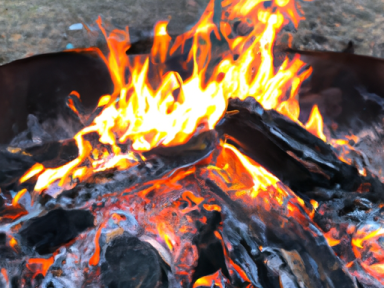Fire Starting Techniques for Outdoor Survival
In an outdoor survival situation, knowing how to start a fire is one of the most important skills to possess. Fire not only provides warmth and light, but it also allows you to cook food, purify water, and signal for help. However, starting a fire in the wilderness can be challenging, especially if you don’t have access to matches or a lighter. That’s why it’s crucial to familiarize yourself with different fire starting techniques beforehand. By learning and practicing these techniques, you’ll be better prepared for whatever the wilderness throws at you.
1. Friction-Based Methods
Friction-based methods involve creating friction between two materials to generate enough heat to ignite a fire. Here are two common friction-based techniques:
- Bow Drill: The bow drill is a popular fire starting method that requires a spindle, a fireboard, a bow, and a handhold. By rapidly moving the bow back and forth, the friction generates enough heat to create an ember on the fireboard, which can then be used to start a fire.
- Hand Drill: The hand drill technique involves rubbing a spindle against a fireboard using only your hands’ pressure. This technique requires considerable skill, as maintaining the right amount of pressure and speed is crucial.
2. Fire Plough
The fire plough is another friction-based method that involves using a hard wooden stick to create a groove in a softer piece of wood. By vigorously rubbing the stick back and forth along the groove, heat is generated, and an ember is formed.
3. Flint and Steel
Using flint and steel is a classic fire starting technique that has been used for centuries. The process involves striking a flint or quartz rock against a piece of high-carbon steel, such as a knife or a fire striker. The sparks produced by the friction can ignite a fire starter material, such as char cloth or a bundle of dry grass.
4. Magnifying Lens
If you have a magnifying lens, such as a magnifying glass or the lens from binoculars, you can use it to focus the sun’s rays onto a small, dry tinder bundle. With patience and the right angles, the concentrated heat from the sun will eventually create an ember and ignite the tinder.
5. Chemical Reactions
Chemical reactions can also be used to start a fire in an emergency situation. Here are two methods:
- Potassium Permanganate and Glycerin: Mixing potassium permanganate with glycerin creates a chemical reaction that produces enough heat to ignite a fire. Apply a small amount of potassium permanganate to a pile of dry tinder, then add a drop of glycerin, and watch as the fire starts.
- Battery and Steel Wool: Rubbing a piece of steel wool against the positive and negative terminals of a battery can create sparks that can easily ignite dry tinder or a fire starter material.
Remember, starting a fire requires practice and patience. Before you find yourself in a survival situation, take the time to learn and master these fire starting techniques. Being able to start a fire in the wilderness could mean the difference between life and death. Stay prepared, stay alive.




GIPHY App Key not set. Please check settings